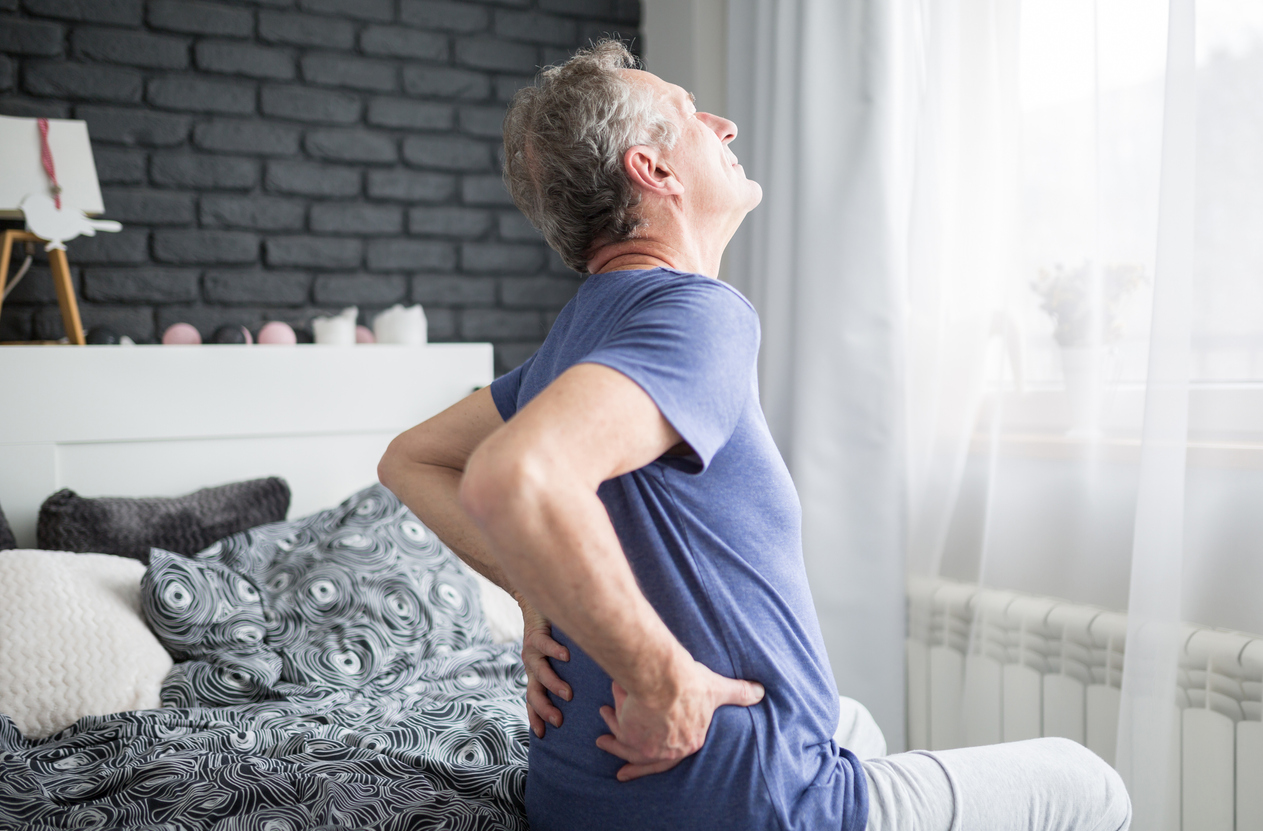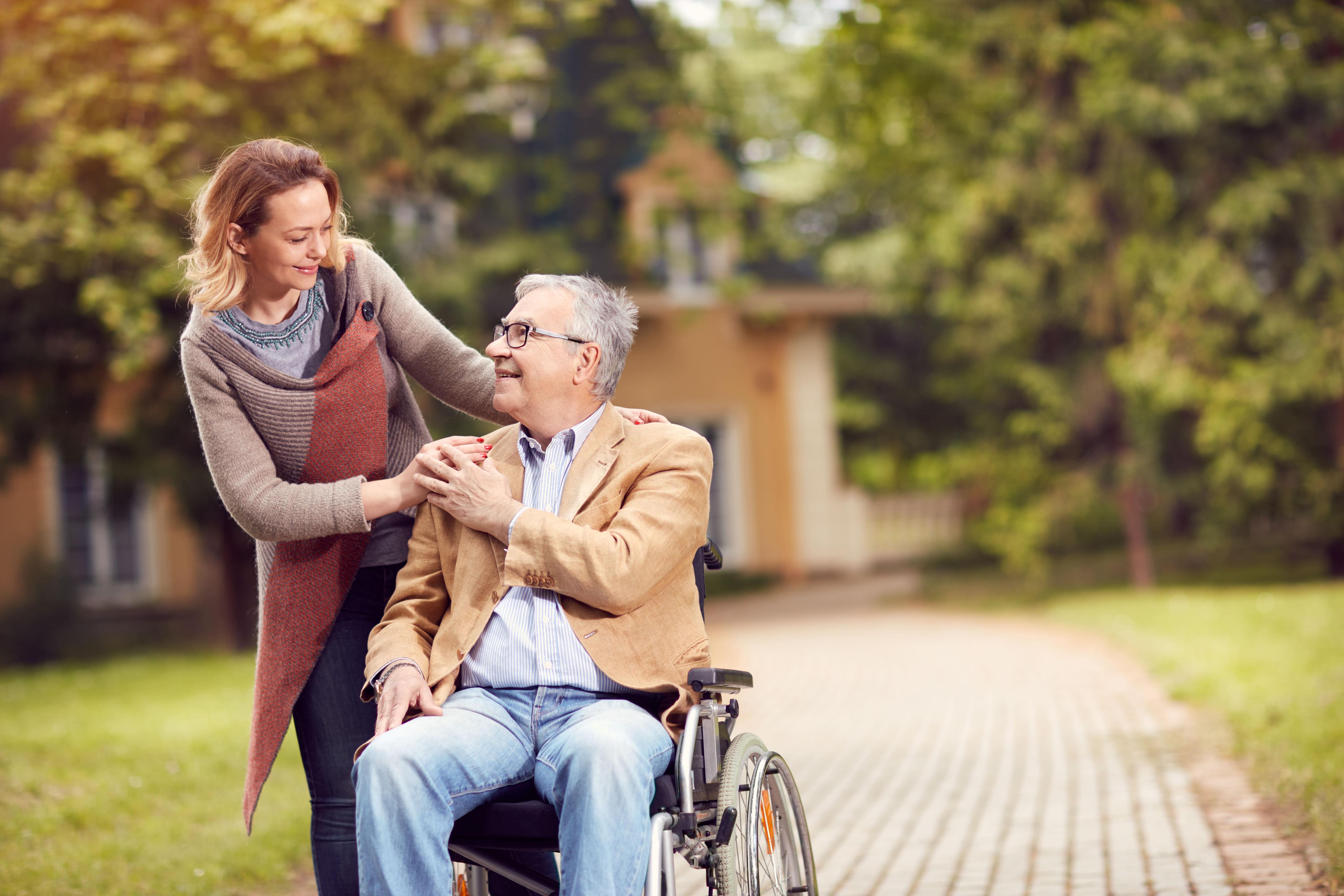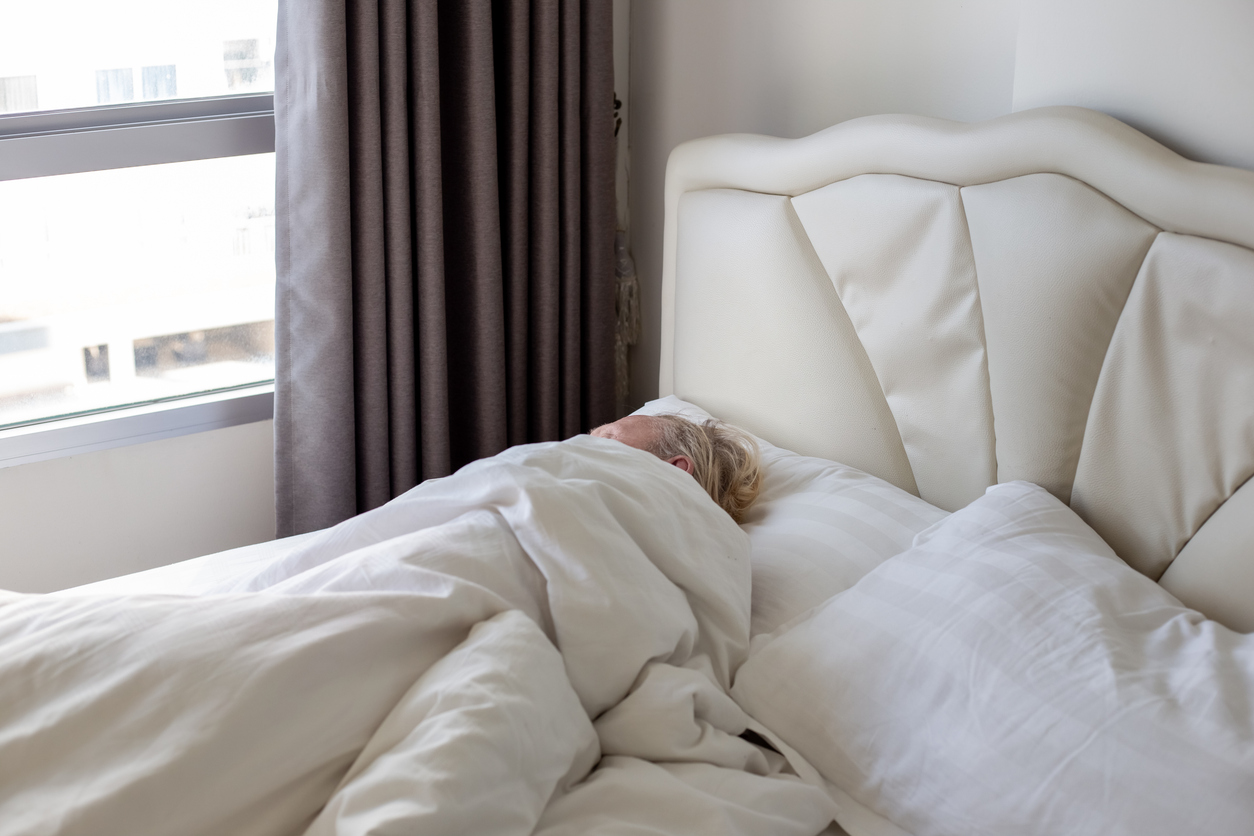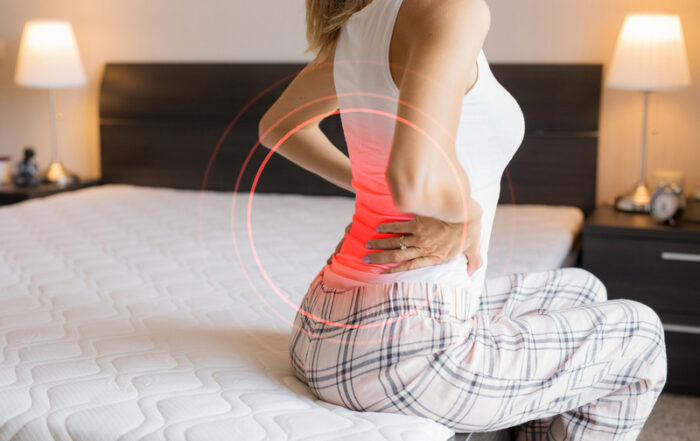Causes Of Lower Back Pain and How to Find Relief
Social Links
It is not unusual for most of us to feel the occasional niggle or twinge in our back – perhaps after a long day on our feet, or doing too much bending and lifting. It’s fairly common and most instances of lower back pain can be resolved by a couple of days’ rest or even a single, good night’s sleep – especially if you have a comfortable chair or bed to rest in.
Sometimes pain can linger, however, and when it’s in the lower back, even the smallest niggle can be distracting. The good news is that most back pain usually goes away with rest and treatment. Knowing the factors that can cause back pain, and taking measures to prevent it, will go a long way to help stop lower back pain from being a pain in your life.
What is Lower Back Pain?
Your lower back, also known as the lumbar region, is the area of your body between the bottom of your rib cage and the top of your legs. As well as the bones of your spine (which are called vertebrae) it includes nerves, the muscles and ligaments that connect to these bones and the soft, cushioning discs between them. This part of the body provides support, strength and stability for the upper body, as well as flexibility and manoeuvrability so we can bend, twist and perform daily activities.
As this part of the body has a lot of work to do, it’s not surprising that one in six of us sometimes experience lower back pain. Pain can range from mild, when it’s uncomfortable but doesn’t prevent us from living as usual, to severe, when it’s constant and so bad it makes it hard to move, sleep or concentrate. Back pain may come in the form of sharp pain or a dull ache, muscle spasms, tingling, numbness, stiffness or even referred pain, which is when it starts in the back but radiates somewhere else. Or you might find that some positions are more comfortable than others – for example, you might experience lower back pain when sitting but not standing.
Common Causes of Lower Back Pain
Sometimes the cause of lower back pain is unclear, and you may need an X-ray or ultrasound to determine the cause. Alternatively it may be obvious… for example, an injury or accident, or you feel something ‘pop’ when you move suddenly or overstretch.
Other lumbar pain causes include:
Bad posture
slumping, slouching or crossing your legs while sitting all put strain on the lower back muscles. This may cause short-term stiffness or strain over time, so you often don’t realise the damage until it’s too late.
Long-term strain/repetitive strain injury (RSI)
performing daily activities incorrectly or too often can cause muscles to weaken or even stress fractures to form in your vertebrae. This includes actions such as lifting and carrying, bending over low work surfaces or even over-exercising. Fortunately, this situation is easily fixed by correcting your technique. If you have a job that involves a lot of lifting or standing, talk to your WHS officer about workplace best practices. If you lift weights in the gym or at home, be sure to consult with a professional trainer to ensure your technique is correct.
Tiredness and fatigue
carrying on when we’re tired forces muscles to keep working when they’re depleted of oxygen and nutrients, which is much more likely to cause strain and injury. When we’re tired is also the time we’re most likely to have an accident, so be aware of your limits and be sure to stop if your body is telling you it’s had enough.
Arthritis and other degenerative conditions
arthritis is an inflammatory condition that affects bones and joints, and is common in the lower back. Gentle exercise each day helps keep muscles loose and promote circulation, while gentle heat applied to the painful area may ease stiffness. A memory foam mattress, which warms and cocoons achy joints, combined with an adjustable bed for distributing pressure, can make living with arthritis a bit more comfortable, or for a taste of luxury, you could invest in a tailored recliner chair with a heat and massage function.
Slipped disc
this is when one of the spongy discs between your vertebrae ruptures so that the jelly-like substance inside is forced out and pushes on the nerves in your back. It’s usually the result of an accident or sudden movement, but can also be the result of strain on the spine over time. Sleeping on a good quality, firm mattress, ideally on an electric adjustable bed so you can change position with ease, can be a great way to recover from a slipped disc injury.
What To Do if You Have Lower Back Pain
The best treatment for lower back pain depends on the cause and how your body responds. If you’ve overdone it and are feeling the strain at the end of the day, a heat pack or warm bath followed by a good sleep might do the trick. Anti-inflammatory creams or tablets may also help, and if you’ve injured yourself you could try applying ice packs to the area. Usually, it’s better to keep moving as much as is comfortable, rather than stay off your feet completely, to keep your muscles supple and your healing blood cells circulating.
If you don’t know the cause, the pain is severe or home treatments don’t help, you should consult your GP or medical professional as soon as possible. You should also see a GP if your pain is accompanied by other symptoms such as fever, weight loss, incontinence, or tingling or numbness in your buttocks or legs. In most cases, medication and physiotherapy may be all that’s required, though some extreme cases could require surgery.
Ways to Prevent Back Pain
If your back pain is caused by lifestyle factors, there’s a good chance that fixing these issues may help alleviate it. For example, correcting your posture, maintaining a healthy weight and wearing appropriate footwear will take strain off your lower back and reduce injuries. Other action you can take includes:
Exercise
the best daily exercises to relieve back pain will depend on your general mobility and the severity of your pain, but anything that gets the blood moving around your body is a good start and can be an effective way to relieve back pain from sitting. Try and get outdoors for some vitamin D, which is great for bone health, include exercises to strengthen your core muscles, and always stretch before and afterwards.
Invest in a new armchair
if you suffer throbbing lower back pain from sitting, changing to a tailored recliner chair could make an enormous difference. The right measurements will keep your back supported and legs held at right angles, which is reported to be the best sitting position for lower back pain. The tilt-in-space function on some chairs even allows you to maintain this position when lying back, while extra lumbar support stops you from slumping sideways.
Try an adjustable bed
we all know that bad sleep can lead to excessive tiredness, pain, stiffness and injury. On the other hand, good sleep promotes healing and reduces recovery time for existing ailments. A high quality memory foam or pocket sprung adjustable mattress with low motion transfer paired with a good quality adjustable bed will help support the spine and keep it still while raising the knees slightly takes the pressure off the lower back. The sitting up function may also help if you experience lower back pain when sitting up from lying down.
People going through a convalescence could consider using a sofa bed to save going up and down stairs. In this case, be sure to invest in a high quality option from a reputable company, that comes with a superior pocket sprung mattresses. Remember that electric sofa beds do not even require manual effort to assemble or put away as they work via simple remote control.
The Bottom Line
Back pain may be debilitating and depressing but it doesn’t have to be inevitable. Instead of accepting it as part of life, a few simple lifestyle changes can build your core strength, flexibility and posture. And of course make a visit to your GP if you’re worried or the pain doesn’t go away.
Take matters into your own hands by investing in quality, supportive furniture from the Mobility Furniture Company. Whether that’s a recliner chair, sofa, sofa bed or fully automated electric adjustable bed with a matching support mattress, you can be sure you’re in the best of hands. After all, we’ve only got one back, and it can’t be replaced – so it’s worth looking after!
*This website contains general medical information. The medical information is not advice and should not be treated as such. Read our full Medical Disclaimer here.



